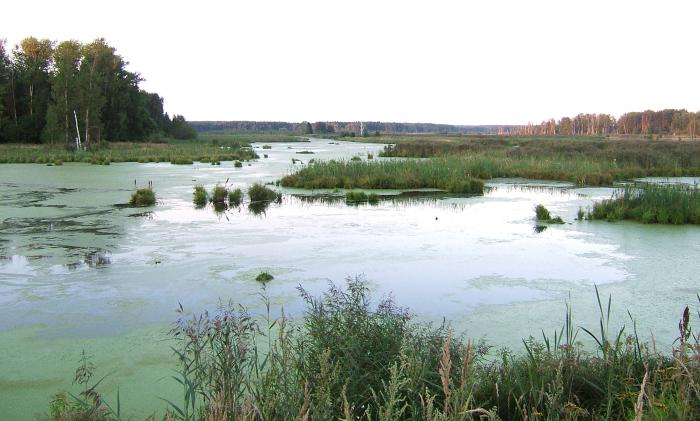The school curriculum is undergoing studywater system of our planet. One of the important topics is rivers. Their value is large enough. It can be said that it is thanks to their waters that life on land is possible. They form the climate, vegetation, wildlife and much more. Numerous cities receive electricity, which is generated at the constructed hydroelectric power stations.
In this article I would like to understand in detail what the floodplain is. Examine the definition of this part of the watercourse. It is also very important to know what types it is. So, let's get started.

Definition
The floodplain of the river is a section of the valley along the direction of the water flow, which is periodically flooded. Basically, this phenomenon occurs during high water, as the water in the channel does not fit.
Typically floodplains are formed by rivers that flowon the plain, it is also possible to meet a floodplain in the mountains, but less often. During floods, this area is periodically flooded. The floodplain is trimmed with terrace ledges, sometimes it is located in separate clusters from different sides of the channel.
Variety in size
Floodplain can be divided into two types: low and high. These names speak for themselves: classification takes place according to specific dimensions.
The high flood plain reaches from 5 to 15 m in height, andlow - only from 0.5 to 2 m. The latter, as a rule, is often subjected to flooding. High is covered with water at more heavy floods. Their width can vary from 10 meters to several kilometers. It is also worth noting that the floodplain has a peculiarity of increasing and decreasing in size. When expansion occurs, sleeves are formed, and at constricted areas of the valleys the rate of flow increases and erodes the channel. Such cases are characteristic of mountain rivers.

Classification by species
Meadows are divided into 5 types:
- segmental;
- one-sided;
- Priterrasovaya;
- rolled up;
- delta.
The formation of a segmental floodplain is associated with the meandering of the river itself, as well as its dismemberment into segments that are located on both edges of the channel.
Watercourses with a Trendmove in one direction, usually have one-sided floodplains. This area stretches along the channel for tens of kilometers. It may also diverge sleeves in different areas.
Priterrasovaya floodplain is located in the lowerparts of the relief, sometimes overgrown with urem (shrubs or forest in the floodplain of the river). When small water flows carry thin weight material, it slowly settles into the floodplain. The surface is often ideally flat.
Dipped flood plain formed due toincrease the height of the near-riverbed shafts. As a rule, this occurs on the straight points of the river on different sides. Since the stream practically does not change its location, the shafts form dams, which are located above the floodplain. They can be found in the course of the Dnieper, the Amu Darya, in the lower reaches of the Kura.
Delta floodplain of the river is the widest and flat, its surface does not change. Sometimes it is divided by a network of lakes, water courses and swamps.

Flooded land - valuable land that canuse for the development of livestock and hay meadows. They are also used to grow crops that need high moisture, such as forage grasses, vegetables, and various fruits. It is not suitable for planting cereals, as they need zonal soil.












